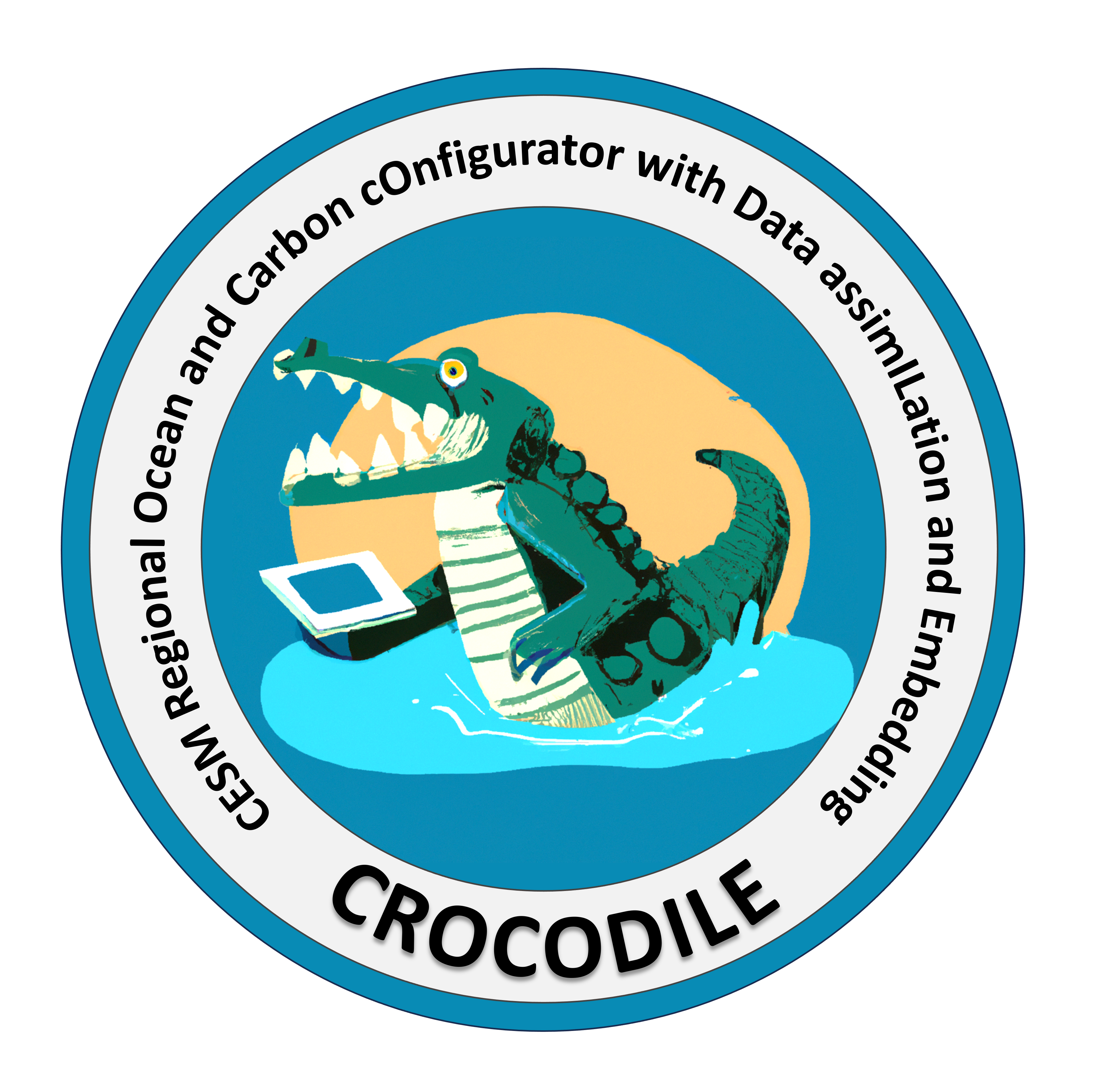Running CUPiD within CESM#
CUPiD has been included in the CESM workflow,
which means you can run CUPiD from a CESM case directory with the familiar case.submit command.
For this project, we will run the notebooks Aidan put together to analyze a case you ran yourself.
Background#
This notebook originated as a third task in the CUPiD Diagnostics Tutorial. It still uses some of the same structure as the tutorial pages.
Step 2: Explore how CUPiD is Incorporated in a CESM Case#
As you are likely familiar with at this point, CESM uses XML files to manage the environment in which your case is run. Each file contains variables pertaining to a different phase of the case generation process:
env_archive.xml
env_batch.xml
env_build.xml
env_case.xml
env_mach_pes.xml
env_mach_specific.xml
env_postprocessing.xml
env_run.xml
env_workflow.xml
We are interested in the CUPiD variables,
which are all defined in env_postprocessing.xml.
XML files are plain-text so we can inspect them directly,
but we’ll use CIME’s xmlquery tool instead.
How do you use xmlquery to see all the variables that contain CUPID in their name (along with their values)?
Solution
$ ./xmlquery -p CUPID
Results in group cupid_analysis
CUPID_BASELINE_CASE: b.e23_alpha17f.BLT1850.ne30_t232.092
CUPID_BASELINE_ROOT: /glade/derecho/scratch/mlevy/archive/CAcurrent.002/..
CUPID_BASE_NYEARS: 100
CUPID_BASE_STARTDATE: 0001-01-01
CUPID_EXAMPLE: key_metrics
CUPID_NYEARS: 1
CUPID_STARTDATE: 0001-01-01
CUPID_TS_DIR: /glade/derecho/scratch/mlevy/archive/CAcurrent.002/..
Results in group cupid_config
CUPID_GEN_DIAGNOSTICS: TRUE
CUPID_GEN_HTML: TRUE
CUPID_GEN_TIMESERIES: TRUE
CUPID_ROOT: /glade/work/mlevy/codes/CESM/cesm3_0_alpha07c_CROCO/tools/CUPiD
Results in group cupid_environments
CUPID_ANALYSIS_ENV: cupid-analysis
CUPID_INFRASTRUCTURE_ENV: cupid-infrastructure
Results in group cupid_run_components
CUPID_MEM_PER_TASK: 10
CUPID_NTASKS: 1
CUPID_RUN_ADF: FALSE
CUPID_RUN_ALL: TRUE
CUPID_RUN_ATM: FALSE
CUPID_RUN_GLC: FALSE
CUPID_RUN_ICE: FALSE
CUPID_RUN_LND: FALSE
CUPID_RUN_OCN: FALSE
CUPID_RUN_ROF: FALSE
CUPID_TASKS_PER_NODE: 128
Step 3: Configure and Run CUPiD#
The first variable to talk about is CUPID_ROOT.
CUPiD is distributed with CESM in the tools/CUPiD subdirectory,
but you may wish to use a more recent version of CUPiD.
This could be handy if, for example,
you are attending a workshop where you took a CUPiD diagnostic and the first exercises were cloning CUPiD,
installing environments from this clone and then running a few examples.
In that case, you want to run
./xmlchange CUPID_ROOT=</path/to/CUPiD>
We also want to run the regional_ocean example,
which is set by the CUPID_EXAMPLE variable.
./xmlchange CUPID_EXAMPLE=regional_ocean
Lastly, we don’t need to generate time series files or build a webpage
./xmlchange CUPID_GEN_TIMESERIES=FALSE,CUPID_GEN_HTML=FALSE
When you are ready to run CUPiD, you can tell case.submit that you want to run the case.cupid job in the workflow.
Make sure you are logged in to Derecho (not Casper) and then run:
./case.submit --job case.cupid
This will add a job to the development queue on derecho,
and it hopefully will start running quickly.
When it finishes, output will be in the computed_notebooks subdirectory of your case directory.
Side Quest: How Does CUPiD Tie in to CESM?#
The details look complicated, but it’s pretty simple from the user’s perspective
(we’re going to look at several files to understand what CESM is doing,
but in practice you won’t need to modify any of them if you just want to run CUPiD).
The CESM workflow is defined in the ccs_config_cesm repository,
and the piece relevant to CUPiD is the machines/template.cupid file:
#!/bin/bash -e
# Batch system directives
{{ batchdirectives }}
# Set environment for CESM
source .env_mach_specific.sh
# Run shell script in CUPiD external
CUPID_ROOT=`./xmlquery --value CUPID_ROOT`
(. ${CUPID_ROOT}/helper_scripts/cesm_postprocessing.sh)
CIME parses everything in {{ }} and replaces it with machine-specific code;
the final file is case.cupid in your case directory.
On derecho, this looks like:
#!/bin/bash -e
# Batch system directives
#PBS -N cupid.{CASE}
#PBS -r n
#PBS -j oe
#PBS -S /bin/bash
#PBS -l select=1:ncpus=1:mpiprocs=1:ompthreads=1:mem=10GB
# Set environment for CESM
source .env_mach_specific.sh
# Run shell script in CUPiD external
CUPID_ROOT=`./xmlquery --value CUPID_ROOT`
(. ${CUPID_ROOT}/helper_scripts/cesm_postprocessing.sh)
In an attempt to keep all necessary code in the CUPiD repository,
you’ll note that the last two lines are then calling helper_scripts/cesm_postprocessing.sh out of CUPID_ROOT.
CUPiD’s helper_scripts/ directory contains several scripts used to create configuration files,
and cesm_postprocessing.sh is the driver that ties everything together.
We won’t walk through the entire script here,
but I want to highlight the comments in the script that list the processes:
# Set variables that come from environment or CESM XML files
# Create directory for running CUPiD
mkdir -p cupid-postprocessing
cd cupid-postprocessing
# Use cupid-infrastructure environment for running these scripts
conda activate ${CUPID_INFRASTRUCTURE_ENV}
# 1. Generate CUPiD config file
${CUPID_ROOT}/helper_scripts/generate_cupid_config_for_cesm_case.py
# 2. Generate ADF config file
if [ "${CUPID_RUN_ADF}" == "TRUE" ]; then
# 3. Generate ILAMB config file
if [ "${CUPID_RUN_ILAMB}" == "TRUE" ]; then
# 4. Generate LDF config file
if [ "${CUPID_RUN_LDF}" == "TRUE" ]; then
# 5. Generate timeseries files
if [ "${CUPID_GEN_TIMESERIES}" == "TRUE" ]; then
# 6. Run ADF
if [ "${CUPID_RUN_ADF}" == "TRUE" ]; then
# 7. Run ILAMB
if [ "${CUPID_RUN_ILAMB}" == "TRUE" ]; then
# 8. Run LDF
if [ "${CUPID_RUN_LDF}" == "TRUE" ]; then
# 9. Run CUPiD and build webpage
conda deactivate
conda activate ${CUPID_INFRASTRUCTURE_ENV}
if [ "${CUPID_GEN_DIAGNOSTICS}" == "TRUE" ]; then
${CUPID_ROOT}/cupid/run_diagnostics.py ${CUPID_FLAG_STRING}
fi
if [ "${CUPID_GEN_HTML}" == "TRUE" ]; then
${CUPID_ROOT}/cupid/generate_webpage.py
fi
You can see how the variables defined in env_postprocessing.xml impact what parts of CUPiD are run.
In the next task we will make sure these XML variables are set correctly and then ask CESM to run case.cupid.
